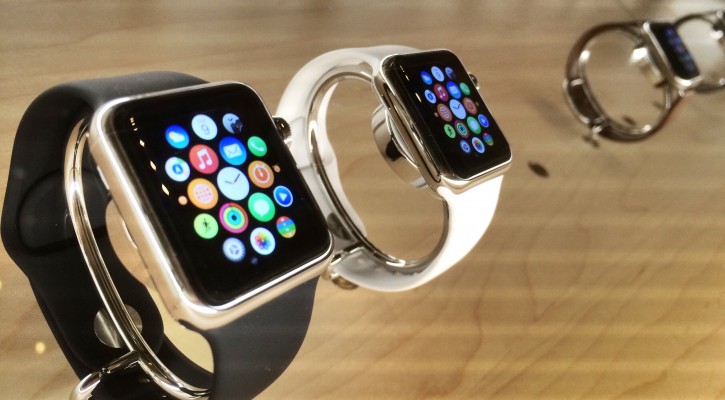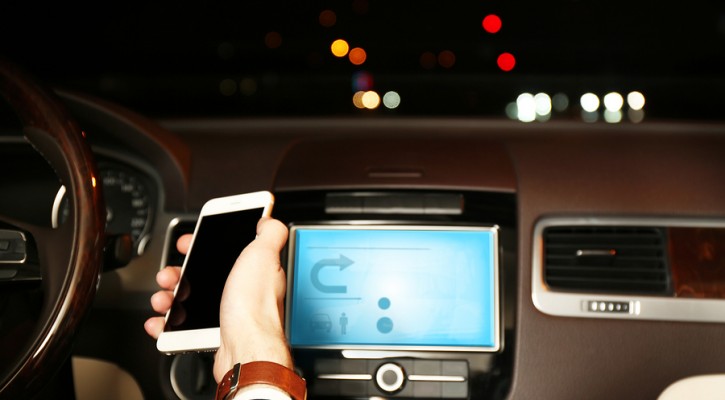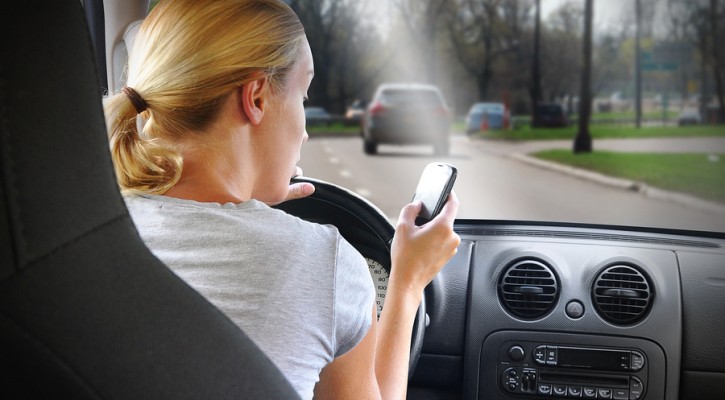Tag Archive: Distracted driving

The Apple Watch And Driving
May 4, 2015
Apple has recently introduced its Apple Watch with a lot of hoopla about all of its capabilities including email and phone. What they aren’t saying much about are the dangers the new Apple Watch can pose for drivers who try to use it.
Distracted driving is a major problem in the US with 3,154 deaths and 424,000 injuries blamed on distracted driving in 2013. If that’s not a big enough problem, it seems that electronics manufacturers are trying to add more and more devices to distract drivers every month.
The Apple Watch is advertised as a device to keep you connected at any time, wherever you may be. That may be true but that connectivity could come at a great cost if you try to use it while driving.
The main distraction in an Apple Watch is its size. The Apple Watch comes in two sizes measuring only 1.4 to 1.6 inches from top to bottom. Making a selection on a screen size that small is going to take a bit of concentration. Scrolling through selections on an Apple Watch is accomplished by use of a small hand wheel on the side and using it will require a user to both look at the watch on one hand while using the other hand to scroll and select options.
Even if users try to use the voice activated Siri, studies have shown that using Siri or other voice activated systems is more distracting than using a hand-held phone.
While the Apple Watch may be a wonderful device in other situations, using it while driving is obviously going to be cumbersome and very distracting. A lot of states have either passed or are considering bans on the use of cell phones while driving. Now they may have to consider bans on the use of the Apple Watch and other similar Android devices. However, laws like that are going to be hard to enforce.
Read more: Smartwatches Reported To Be Less Safe While Driving Than Smartphones

Is Voice Activated Texting While Driving Safer?
April 23, 2015
Automakers and cell phone companies are pushing voice activated texting as a safe alternative to manual texting but is really safer? Not according to researchers at Texas A&M University’s Transportation Institute (TTI).
While most studies of this kind involve observing study participants on computerized virtual driving courses, Christine Yager, an associate transportation researcher at TTI conducted a study in actual cars on a closed driving course; the first study of its kind.
Forty-three participants were observed under several different driving scenarios. They first drove the course without the use of cell phones and their reaction times were measured to create a baseline. They were then observed three more times, texting manually and using two different voice activated texting programs (Siri and Vlingo). Test subject reaction times to lights that came on at random times on the course were measured in each of the driving scenarios.
The study showed that, if the driver chose to visually verify the contents of the text, the voice activated texting systems offered no safety advantage over manual texting.
According to the TTI website, other findings from the study showed:
- Driver response times were significantly delayed no matter which texting method was used. In each case, drivers took about twice as long to react as they did when they weren’t texting. With slower reaction times, drivers are less able to take action in response to sudden roadway hazards, such as a swerving vehicle or a pedestrian in the street.
- The amount of time that drivers spent looking at the roadway ahead was significantly less when they were texting, no matter which texting method was used.
- For most tasks, manual texting required slightly less time than the voice-to-text method, but driver performance was roughly the same with both.
- Drivers felt less safe when they were texting, but felt safer when using a voice-to-text application than when texting manually, even though driving performance suffered equally with both methods.

Are You Addicted To Your Smartphone?
December 3, 2014
Addictions take many forms and it’s becoming apparent that more and more Americans are addicted to their smartphones or other digital devices.
Addictions can be somewhat harmless or they can take over and ruin your life and the lives of others that you love and care about. Not only can addictions ruin your life, they can be life threatening. In the case of smartphones and other digital devices, the constant urge to always stay connected can take over one’s life and, if done while driving, can easily lead to a fatal crash.
The Center for Internet and Technology Addiction has created a test to determine whether or not you could be addicted to your digital devices and may need help in curbing your need to stay connected. To take the test, visit: Digital Distraction Test

Drivers Abandon One Dangerous Habit For One More Dangerous
November 19, 2014
Drivers are using cell phones less but the even more dangerous habit of texting while driving hasn’t changed according to a new study by State Farm Insurance. State Farm has conducted a phone survey of drivers aged 18 and over every year for the past six years and the trends are both encouraging and disturbing at the same time. According to the survey:
- There has been a steady reduction in the number of drivers talking on a hand-held cell phone.
- The number of people who report texting while driving has remained stable over six years.
According to State Farm, the growth of Smartphones has created new distractions with “a significant increase over six years in drivers using their phones for: accessing the Internet, reading email, responding to email, programming and listening to a navigation system and reading social media.”
Another disturbing finding is that ten percent of drivers report that driving in school and construction zones has no impact on their cell phone use.
More drivers report that they are using hands-free devices but a recent study by AAA shows that hands free devices can be even more distracting because the effort required in getting the voice recognition system to recognize commands can frustrate drivers and distract their attention from the road.
Even though most drivers report that they are more likely to talk on a cell phone rather than text, drivers still don’t seem to be getting the word that cell phone use is still distracting because paying attention to a cell phone conversation requires concentration and brain power that should be devoted to the road ahead.
For more information, read: DRIVERS ADMIT TO USING THEIR PHONE WHEN BEHIND THE WHEEL – HERE’S WHEN

Aware Of The Dangers, Drivers Text Anyway
November 5, 2014
Even though they say they are aware of the dangers, most drivers still continue to use their cell phones and text while driving according to a new survey from AT&T.
As part of a campaign against texting and driving, AT&T surveyed 1,004 US adults about their driving and texting habits. The survey showed that, while 98 percent said they were aware of the dangers;
- Seventy-five percent admit to texting while driving.
- Two-thirds have read text messages while waiting at a traffic light.
- Twenty-five percent have sent text messages while driving.
- More than one-quarter believe they are capable of safely doing several things at once while driving.
Read more: Survey finds people text and drive knowing dangers
